
Researching energy and defence. Physics and data science background. Happy getting into the weeds.
How to get URL link on X (Twitter) App

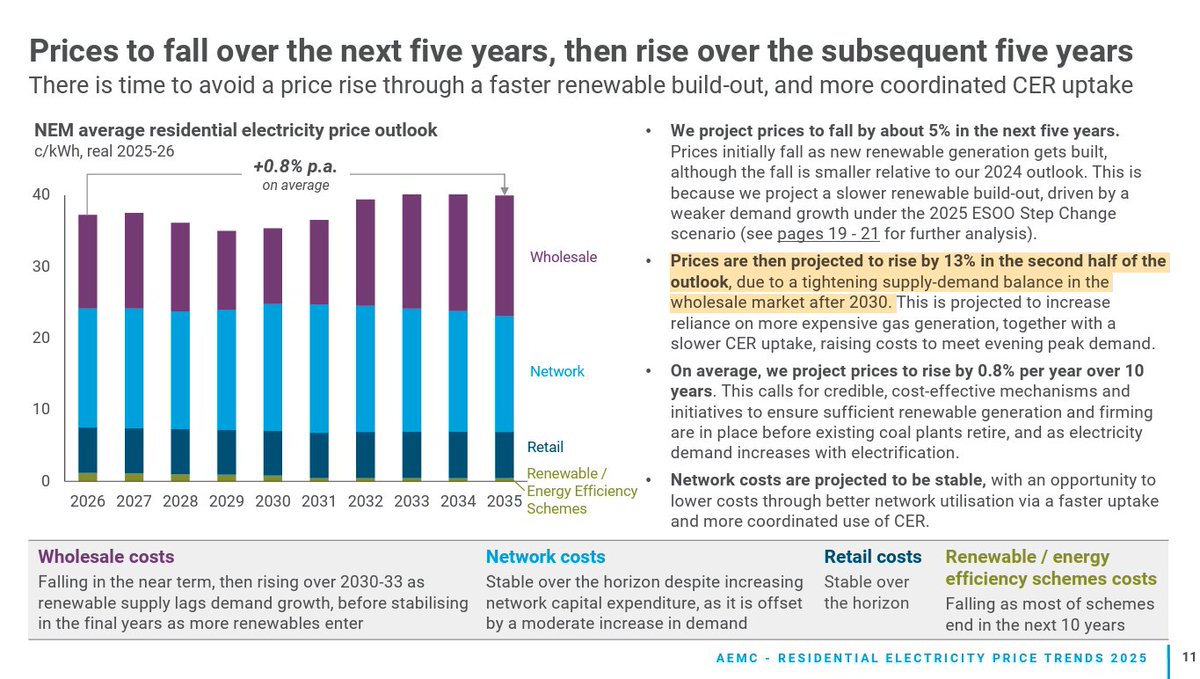
 Let's start with the conclusion.
Let's start with the conclusion.

 First, here's an excerpt from the latest published terms of reference. Which say, explicitly, that it should be a forecast. Despite that being difficult, their instruction is to try, for 3 years, using the last final year as an anchor. 2/
First, here's an excerpt from the latest published terms of reference. Which say, explicitly, that it should be a forecast. Despite that being difficult, their instruction is to try, for 3 years, using the last final year as an anchor. 2/






 Basically, it was un-buildable. Or rather, the scale of civil works required, on "non-conventional" construction required, like lifting tower segments in place with helicopters, made the cost/complexity/safety too.... whatever. Un-buildable.
Basically, it was un-buildable. Or rather, the scale of civil works required, on "non-conventional" construction required, like lifting tower segments in place with helicopters, made the cost/complexity/safety too.... whatever. Un-buildable.


https://twitter.com/FootnotesGuy/status/1990450132840788199

 Now this isn't the exact same line as is proposed for the Sydney Ring South upgrade. It's actually just upstream, kinda in the thick of the wind pocket.
Now this isn't the exact same line as is proposed for the Sydney Ring South upgrade. It's actually just upstream, kinda in the thick of the wind pocket. 

https://twitter.com/FootnotesGuy/status/1990450132840788199

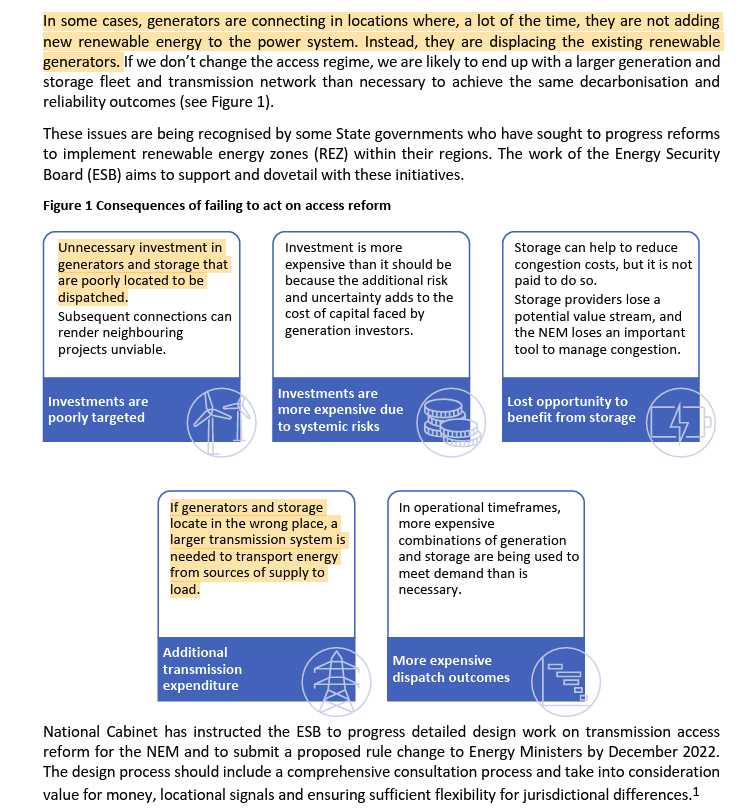 They wrote a major paper about these problems.
They wrote a major paper about these problems.



 Where to start... How about where I started. The point of intrigue.
Where to start... How about where I started. The point of intrigue. https://x.com/FootnotesGuy/status/1980769974580088920?s=20

https://twitter.com/JesseJenkins/status/1986233040788398096First, millions of Australian's won't get free power at all.


 This is a massive problem for AEMO, because 'coordinated' (ie VPP) battery storage is the largest part of storage by capacity in their electricity transition blueprint, the Integrated System Plan. Hundreds of billions worth. 2/
This is a massive problem for AEMO, because 'coordinated' (ie VPP) battery storage is the largest part of storage by capacity in their electricity transition blueprint, the Integrated System Plan. Hundreds of billions worth. 2/
 Who could be behind this deft manoeuvre? The Sunrise Project.
Who could be behind this deft manoeuvre? The Sunrise Project. 


 Take this SMH headline "Like a Mad Max Movie"...
Take this SMH headline "Like a Mad Max Movie"... 
https://twitter.com/GrattanInst/status/1977313663426916695Firstly, what are they arguing for?

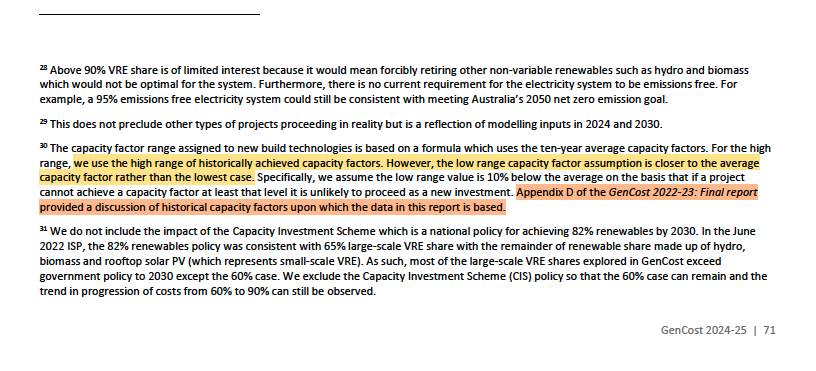
https://twitter.com/DavidOsmond8/status/1970438479504121909
 And on page 80 of the 2022-23 report we have CSIRO's explanation.
And on page 80 of the 2022-23 report we have CSIRO's explanation. 


 This is a recent document... from a serious consultancy, all about "Price impact of coal exit". And some industrial loads.
This is a recent document... from a serious consultancy, all about "Price impact of coal exit". And some industrial loads.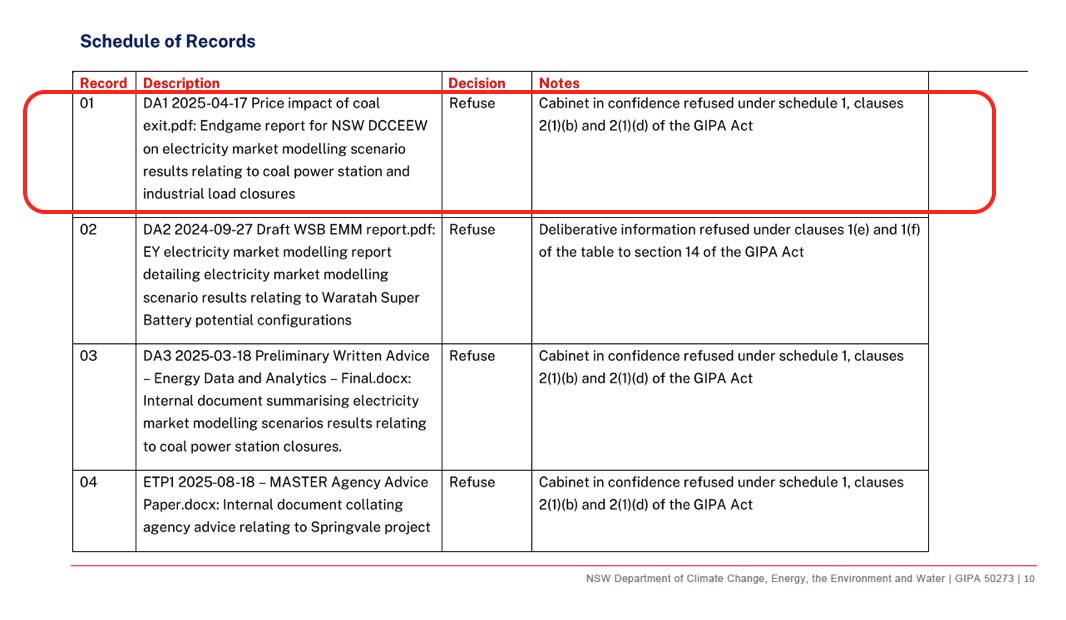


https://twitter.com/DavidOsmond8/status/1971101643275108765Let's start with capacity factor.
https://x.com/DavidOsmond8/status/1971101658240409761

 Here are the ranges for CSIRO's 'ideal' mix of integrated, firmed wind and solar. Their chart just shows a mid-point. I'll focus on the 90% Variable Renewable Energy (VRE), because that's what policy says we're aiming for, but it's much the same.
Here are the ranges for CSIRO's 'ideal' mix of integrated, firmed wind and solar. Their chart just shows a mid-point. I'll focus on the 90% Variable Renewable Energy (VRE), because that's what policy says we're aiming for, but it's much the same. 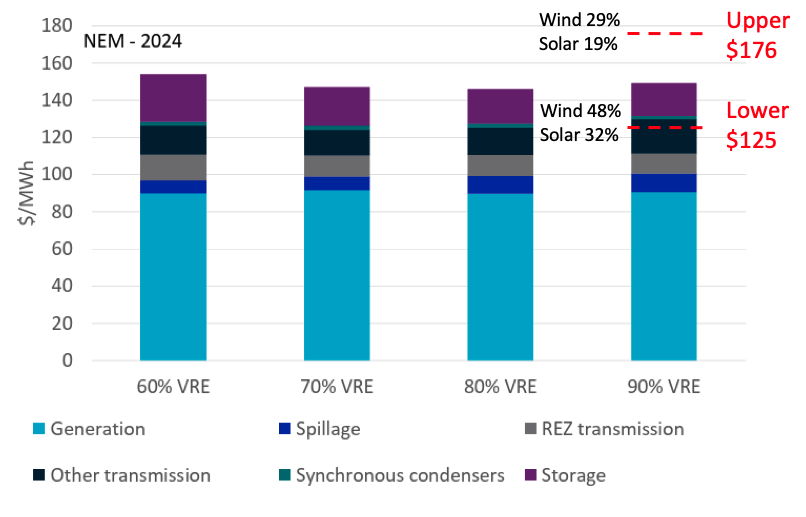

 In this thread, I spell out how the @the_AEMC has created a piece of fan-fiction for the ISP, abandoning their terms of reference. It repeats and accepts the most ridiculous assumptions of the ISP. Like ignoring costs of consumer investments. 2/
In this thread, I spell out how the @the_AEMC has created a piece of fan-fiction for the ISP, abandoning their terms of reference. It repeats and accepts the most ridiculous assumptions of the ISP. Like ignoring costs of consumer investments. 2/https://x.com/QuixoticQuant/status/1864288957321892048

 That's right, they derive a "global carbon price" commensurate with the world hitting net-zero targets. And apply it to Australia.
That's right, they derive a "global carbon price" commensurate with the world hitting net-zero targets. And apply it to Australia. 

 Here's the spiel announcing the report. Fully committed to net zero by 2050, claiming that can can be "affordably and reliably achieved".
Here's the spiel announcing the report. Fully committed to net zero by 2050, claiming that can can be "affordably and reliably achieved". 

 This was in response to a Freedom of Information request @CISOZ put in, inspired by this brilliant take on CSIRO's refusal to disclose their model in this year's publication, despite repeated requests. 2/
This was in response to a Freedom of Information request @CISOZ put in, inspired by this brilliant take on CSIRO's refusal to disclose their model in this year's publication, despite repeated requests. 2/https://x.com/jaelubberink_/status/1950015398818017614